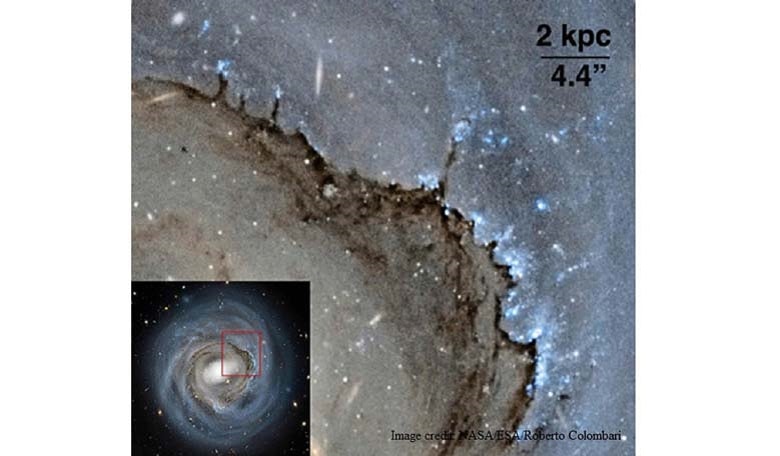When we think of “wind,” we think “atmosphere.” Cosmic wind is something else entirely.
We have known about cosmic winds for a while. They can sweep interstellar material from a galaxy, thus preventing the formation of future stars.
How such processes happen isn’t often discussed in detail. But Yale’s Jeffrey Kenney has analysed Hubble Space Telescope images of a nearby galaxy, NGC 4921, to reveal how what happens to a galaxy when cosmic winds sweep through it. His findings have been published in Astronomical Journal.
The wind itself is a product of the galaxy’s orbital motion through hot gas in its cluster. Kenny has discovered elaborate gas formations (you can see a close-up in the image above) on the galactic disk’s leading edge.
The formations were compared by Astronomy.com to Hubble’s famous “Pillars of Creation” (showing columns of dust and gas in the Eagle Nebula), but are 1000 times larger. They are evidence of the destructive nature of cosmic wind, also known as ram pressure. The formations are leftovers – they show what happens when cosmic wind destroys a gas cloud, leaving behind the densest materials, which then show up as pillars.











